Table of contents
Strawberries ( Fragaria ) have been known to man since the Stone Age. At first, the wild strawberry ( Fragaria vesca ) was cultivated, and through accidental cross-breeding the garden strawberry ( Fragaria x ananassa ) was created. Strawberries contain a lot of vitamin C, even more than lemons.
Use in the kitchen:
Fresh strawberries are an excellent healthy, low-calorie snack. They also taste delicious in muesli ( pea muesli ), in fruit salad, as a smoothie, as a cold mousse or in punch. As a cake topping or in ice cream, they not only look good, but also delight with their unique, fresh, fruity taste.
When cooked, strawberries are used as a puree (as a dessert sauce) or as a compote. There are also fruit cakes, tarts or tiramisu with strawberries.
Strawberries can be processed into strawberry jam. Due to their lower acidity and gelling ability, they are often mixed with red currants or rhubarb . Strawberries can also be found in rum sauce or as a liqueur.
In terms of taste, wild strawberries are far superior to garden strawberries and you can almost always use other strawberries in recipes instead of garden strawberries, especially wild strawberries.
Vegan recipe for smoothie with strawberries:
For a vegan strawberry-rhubarb smoothie you need 2 sticks of rhubarb , 1 banana , 200 g of strawberries, 1 tablespoon of oat flakes and 1 tablespoon of ground nuts ( walnuts , hazelnuts or almonds ).
Cut the washed and cleaned rhubarb into small pieces. Put these and all the other fresh ingredients (also chopped) together with the nuts and oat flakes in a high-performance blender or puree them with a hand blender to make a fine smoothie.
Vegan recipe for panna cotta with strawberry sauce:
Put 250 ml of almond milk , 200 ml of coconut milk and 1 tablespoon of almond butter in a saucepan and carefully mix with 6 g of agar-agar . Season to taste with a little real vanilla and 1-2 tablespoons of whole cane sugar . Bring everything to the boil while stirring and simmer for 2-3 minutes. Then divide into 4 small glasses and refrigerate for a few hours. Meanwhile, puree 200 g of strawberries and sweeten as needed. Divide the strawberry sauce between 4 deep plates and carefully turn the panna cotta onto them.
Vegan recipes with strawberries can be found under the note: " Recipes that have the most of this ingredient ".
| Not only vegans or vegetarians should read this: Vegans often eat unhealthily. Avoidable nutritional mistakes . |
Shopping - where to buy?
Strawberries can be bought almost all year round at supermarket chains such as Coop , Migros , Denner , Volg , Spar , Aldi , Lidl , Rewe , Edeka , Hofer etc. In northern Central Europe, strawberries are in season from May to the end of July , and only then are they really fresh and from the region. At this time you can find them at weekly markets or at small stands on the side of the road or in fields. There are also areas where you can pick fresh strawberries straight from the field.
Outside of the season, garden strawberries usually come to Northern Europe from southern Spain, France, Israel, Egypt or from overseas and have long transport routes behind them.
Strawberries are rarely available as canned or frozen fruit. On the other hand, freeze-dried strawberries (lyophilized or sublimation dried) are often found in health food stores and organic shops. These are ideal for muesli in winter - as are freeze-dried raspberries and blueberries.
Found in the wild:
The wild strawberry ( Fragaria vesca ) is not a wild form of the garden strawberry. However, it can be found in the wild in large parts of Europe and northern Asia, especially in light deciduous and coniferous forests and on forest edges. 4 Additional explanations can be found in the chapter "Occurrence - Origin" below.
Storage:
Strawberries are particularly sensitive to pressure. They spoil easily and are very susceptible to mold. During transport, it is important that the strawberries are not placed too close together and do not get any bruises.
Stored at room temperature, freshly picked strawberries only last for one day. They are not climacteric, so they do not ripen further. Water removes the aroma from the fruit, which is why you should only wash them briefly immediately before eating them. If stored correctly, strawberries can last up to two days in the fridge. They should be stored unwashed in the vegetable compartment of the fridge, ideally in a large sieve. If you place the strawberries on a plate with kitchen paper, this will absorb the remaining moisture and prevent mold from quickly forming.
If you want to have aromatic strawberries on hand in winter for a strawberry sauce or smoothies, you can wash and pat dry the fruit and freeze it. However, they are then no longer suitable for fresh consumption as they are very mushy after thawing.
Ingredients - nutritional value - calories:
Strawberries have a very low energy value of 32 kcal/100g. They consist of 91% water and contain practically no fat and very little protein.
However, their water, vitamin and mineral content is very high. Strawberries have even more vitamin C than lemons for the same weight. The amount of ascorbic acid in strawberries is 59 mg and that in lemons 51 mg/100g. Acerola has extremely high values (1678 mg); sea buckthorn berries (450 mg/100g) are also very rich in vitamin C. 5 Watch our video about vitamin C.
Strawberries contain 24 µg/100g of folic acid . Hokkaido pumpkins and zucchini contain the same amount. The precursor of folic acid, folate, is found primarily in pulses. Folate is very sensitive to light and heat and reacts with oxygen. If not prepared properly, losses can be as high as 90%. 5 According to the German Nutrition Society ( DGE ), the daily requirement is 300 µg. Pregnant women and nursing mothers need between 450 and 550 µg daily. 6
Of the vitamins in strawberries, biotin (vitamin B 7 ) and vitamin K are also worth mentioning.
Potassium is found almost everywhere. Most of it is found in dried herbs (eg parsley : 2680 mg/100g), in pulses ( chickpeas : 720 mg/100g) and nuts ( almonds : 730 mg/100g). Compared to bananas , which contain a lot of potassium for a fruit (360 mg/100g), strawberries are also a good candidate with 153 mg/100g. 5
With 0.39 mg of manganese per 100 g, strawberries have a respectable content for a fruit. The trace element is mainly found in the germs and outer layers of grains - but nuts and seeds also contain a lot of it. Wheat germ has 9-10 mg, hazelnuts 6 mg andpumpkin seeds 4.5 mg/100g. The manganese content ofblueberries (0.34 mg) and sea buckthorn berries (0.6 mg) is in a similar range to that of strawberries. 5
Iron and magnesium also play a significant role in strawberries. For more information on the ingredients, please read the table at the bottom of the text.
The complete ingredients of strawberries, the coverage of the daily requirement and comparison values with other ingredients can be found in our nutrient tables. In the article Nutrients explained you will get a detailed insight into the topic.
Ratio of omega-6 (LA) to omega-3 fatty acids (ALA) in berries:
Berries and wild berries usually have a very good ratio between LA (linoleic acid) and ALA (alpha-linolenic acid) . In general, berries have a low fat content and the amounts of omega-3 and omega-6 are accordingly low. In relation to the total fat content, however, the polyunsaturated fatty acids make up a high proportion.
The body uses alpha-linolenic acid to produce other omega-3 fatty acids (EPA and DHA), which have an anti-inflammatory effect, while linoleic acid is used to produce the pro-inflammatory arachidonic acid (AA). The good ratio of omega-6 to omega-3 is another reason why the berries are considered a very healthy food.
Information on individual values of ALA and LA (source: USDA, Önwt, Debinet):
Berry (raw) | L.A. (g/100g) | ALA (g/100g) | Ratio LA:ALA | Total fat (g/100g) | source |
2.6 | 1.8 | 1.5:1 | 7.1 | Önwt | |
0.6 | 0.5 | 1:1 | 1.7 | Önwt | |
0.19 0.4 0.36 | 0.09 0.3 0.26 | 2:1 1.25:1 1.3:1 | 0.34 1.0 1.0 | USDA Önwt Debinet | |
Forest Blackberry | 0.4 | 0.3 | 1.25:1 | 1.0 | Önwt |
0.2 | 0.2 | 1:1 | 0.5 | Önwt | |
0.3 | 0.2 | 1.5:1 | 0.7 | Önwt | |
0.2 0.22 | 0.2 0.15 | 1:1 1.5:1 | 0.6 0.6 | Önwt Debinet | |
0.25 0.1 | 0.13 0.1 | 2:1 1:1 | 0.46 0.3 | USDA Önwt | |
Forest Strawberry | 0.1 | 0.1 | 1:1 | 0.4 | Önwt |
Forest Raspberry | 0.1 | 0.1 | 1:1 | 0.3 | Önwt |
Boysenberry | 0.11 | 0.08 | 1.5:1 | 0.3 | Debinet |
0.11 | 0.07 | 1.5:1 | 0.26 | USDA | |
strawberry | 0.09 | 0.06 | 1.5:1 | 0.21 0.4 | USDA Debinet |
0.27 | 0.05 | 5:1 | 0.4 | USDA | |
0.05 0.04 | 0.04 0.03 | 1:1 1.25:1 | 0.13 0.2 | USDA Debinet |
Health aspects - effects:
Strawberries are very healthy for the human immune system due to their high vitamin C content. The antioxidant effect of ascorbic acid binds free radicals, which protects the body's cells from damage. It also protects the skin and counteracts the aging process. 7
Red fruits contain many anthocyanins (plant pigments); strawberries contain more than 25 different ones. 8 Anthocyanins also have an antioxidant effect in the body. They protect body cells and DNA from oxidative stress. 9
Regular consumption of strawberries lowers blood pressure and reduces the risk of heart disease. 10
Strawberries contain a lot of secondary plant substances that have anti-inflammatory and anti-carcinogenic effects. 11 The growth-inhibiting mechanisms against cancer cells were observed primarily in the polyphenol ellagic acid. 12
Dangers - Intolerances - Side effects:
Strawberries are very susceptible to mold (fungal infestation), which is why conventional farmers use a lot of fungicides. The detectable pesticide residues are in the borderline range, but we do not (yet) know exactly how an accumulation of pesticides affects the body. They are suspected of being carcinogenic. 13
When buying strawberries, give preference to those that have been produced organically. The plant protection measures used here must not leave any residues and the minimum waiting periods before harvesting are longer.
Folk medicine - naturopathy:
The wild strawberry is used for inflammation of the mucous membranes as well as stomach and intestinal complaints.
Occurrence - Origin:
Cultivated varieties of wild strawberries can be dated back to the 14th century. However, the small fruits make harvesting rather laborious. The wild strawberry ( Fragaria vesca ) is also known as the monthly strawberry or bush strawberry, although strictly speaking the first term would only describe a relatively late cultivated form of the wild strawberry.
The garden strawberry with its larger fruits has been cultivated since the 18th century. It is also called the pineapple strawberry or cultivated strawberry ( Fragaria x ananassa , syn. Fragaria x magna ). It resulted from a chance cross between the American strawberry species of the Chilean strawberry ( Fragaria chiloensis ) and the scarlet strawberry ( Fragaria virginiana ). 3 The Chilean strawberry can be found on the North and South American Pacific coast. The scarlet strawberry is native to North America. There it grows in open forests and forest clearings. Today there are many different varieties of garden strawberry, which are used depending on the region.
The name pineapple strawberry was the original name for the cultivated strawberry we know today (garden strawberry). In fact, this is a different variety. A virus-resistant clone of the "white pineapple" variety of garden strawberry was sold as a pineberry. These fruits are not red, but whitish, and the nuts are red. Their aroma is reminiscent of a pineapple. This variety has been known since the 18th century, but cultivation is not widespread. 18
There are also cultivated hybrids of the wild strawberry and garden strawberry species: Fragaria x vescana (Vescana varieties). 3
According to Wikipedia , China, the USA, Mexico, Egypt, Turkey and Spain had the largest harvests in 2017. 14
Growing in the garden or as a potted plant:
Strawberries love full sun. The soil should be loose and rich in humus, whether in the field, in the bed or in the pot. If you have heavy soil, you can mix in some sand. Strawberries like it moist, but cannot tolerate waterlogging.
To avoid soil pests, an interval of 4 years should be observed. Fabaceae such as peas or beans are suitable as pre-culture. Green plants are usually planted in late summer. "Frigo plants" can be planted from April to July. These young cuttings are stored at -1 to -2 °C in an artificial winter. This makes them easier to transport and the first harvest can take place in the year they are planted.
To reduce the weed pressure, you can put straw under the plants. This also helps against snails.
Organic fertilizer or mature compost is a good option for fertilization. The first fertilizer application is 3 weeks after planting, then fertilize again in August or September after the harvest.
The time of harvest depends on the variety. Some strawberries are ready to eat in June, others do not ripen until September. The aroma of the fruit is most intense early in the morning. When harvesting, the leaf ring should remain on the strawberry. Otherwise, water will penetrate this opening when washing and dilute its taste.
For garden strawberries, propagation via cuttings has proven to be effective. These are dug out with a spade and planted in the new bed.
The best time to sow seeds is between January and March. The soil should only cover the seeds slightly, as most varieties are light germinators. The germination temperature should not fall below 16 °C. It takes about 3-6 weeks for the strawberry seeds to germinate. When the plants are 2-3 cm high, they can be separated and later planted outside. 15
Danger of confusion:
The wild strawberry is most likely to be confused with the Indian mock strawberry ( Potentilla indica ). Its fruit looks similar, but the flowers are not white-yellow, but just yellow. It is edible, but has very little taste.
The musk strawberry ( Fragaria moschata ) has slightly larger fruits. It is also called cinnamon strawberry, muscat strawberry or muscatel strawberry. The flowers are very similar to those of the garden strawberry we know. The fruit can be a similar red to brownish color. This strawberry was found in many gardens until the 19th century. Its taste is compared to the "muscat" taste of some grape varieties. 16
Animal protection - species protection - animal welfare:
Strawberry crops in the field offer bees and wild bees a rich supply of nectar. In addition, pollination of the strawberries by insects ensures larger fruits and better yields. Through more uniform pollination, the plants produce more of the phytohormone auxin, which is involved in many growth and development processes of plants. 17
General information:
The strawberry genus ( Fragaria ) belongs to the rose family (Rosaceae). There are about 20 species and many subspecies, hybrids and numerous cultivated varieties.
Why is the strawberry a nut? From a botanical point of view, the strawberry is an aggregate fruit or aggregate nut fruit. Sometimes it is also referred to as an aggregate achene fruit (Achenecetum). The fruit that we call a berry is actually the fruit base, i.e. an achene. The actual fruit is the small, usually green grains on the surface. 1,2 It is similar with raspberries and blackberries, but they are aggregate stone fruits (Drupecetum).
Alternative names:
As already mentioned, the garden strawberry is also called the pineapple strawberry or cultivated strawberry. The wild strawberry is also called the monthly strawberry or bush strawberry (for details, see the chapter Occurrence - Origin above).
There are many German common names for strawberries: Aardbeeren, Aelberte, Albeere, Arbern, Arpel, Baschierper, rote Besinge, Büschierpern, Ebbeere, Eberi, Ebern, Erbeern, Eerbier, Elberken, Erbel, Erbeer, Erber, Erbere, Erbern, Erbir, Erbirbaum, Erdbeeri, Erdberenboem, Erdbese, Erdbiere, Erdebeeren, Erpber, Erpeln, Erper, Erpern, Erperstaud, Erpher, Erpir, Erpern, Errberkraut, Erthebere, Grasbiel, Haarbeere, Ihrbär, Knickbeeren, Lastbeere, Majuse, Preschtling, Roaper, Ropperen, Rotber, Rotbere, Rotpir and Rothbeere. 14
In English, the garden strawberry is called strawberry, the wild strawberry is called wild strawberry, woodland strawberry, Alpine strawberry, Carpathian strawberry, European strawberry or fraisier des bois.
Literature - Sources:
Bibliography - 18 Sources
| 1. | Hanelt P, Helm J, Kruse J. Urania Pflanzenreich. Blütenpflanzen 1. Urania Verlag: Leipzig/Jena/Berlin. 1993. |
| 2. | Simpson MG. Plant Systematics. Academic Press. 2006. |
| 3. | Wikipedia Gartenerdbeere. |
| 4. | Wikipedia Walderdbeere. |
| 5. | USDA United States Department of Agriculture. |
| 6. | DGE Deutsche Gesellschaft für Ernährung. Referenzwerte. |
| 7. | Wintergerst ES, Maggini S, Hornig DH. Immune-enhancing role of vitamin C and zinc and effect on clinical conditions. Ann Nutr Metab. 2006;50(2). |
| 8. | Lopes da Silva F, Escribano-Bailón MT, Pérez Alonso JJ, et al. Anthocyanin pigments in strawberry. LWT - Food Science and Technology. Science Direct. 2007;40(2). |
| 9. | Tulipani S, Alvarez-Suarez JM, Busco F, et al. Strawberry consumption improves plasma antioxidant status and erythrocyte resistance to oxidative haemolysis in humans. Food Chem. 2011;128(1). |
| 10. | Basu A, Rhone M, Lyons TJ. Berries: emerging impact on cardiovascular health. Nutr Rev. 2010;68(3). |
| 11. | Aaby K, Ekeberg D, Skrede G. Characterization of phenolic compounds in strawberry (Fragaria x ananassa) fruits by different HPLC detectors and contribution of individual compounds to total antioxidant capacity. J Agric Food CHem. 2007;55(11). |
| 12. | Reuter S, Gupta SC, Chaturvedi MM, et al. Oxidative stress, inflammation, and cancer: how are they linked? Free Radic Biol Med. 2010;49(11). |
| 13. | Kassensturz.ch Pestizide in Schweizer Erdbeeren: Gespritzt wird fast überall. 2016. |
| 14. | Wikipedia Erdbeere |
| 15. | WDR.de Erdbeere: Anbau und Pflege von Charlotte Schwalb. |
| 16. | Wachsmuth B. Von Monats-, Wald- und Moschuserdbeeren. Gartenpraxis. Band 35(4). 2009. |
| 17. | Pflanzenforschung.de Bessere Früchte durch Insektenbestäubung. 2018. |
| 18. | Lieten Philip. Spezialisiserung in der Erdbeerzucht. Fragaria Holland. Spargel & Erdbeer Profi. 2009;4. |

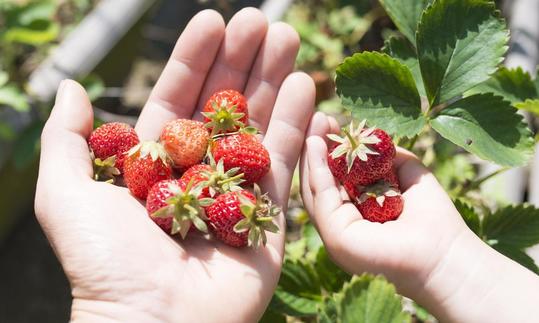

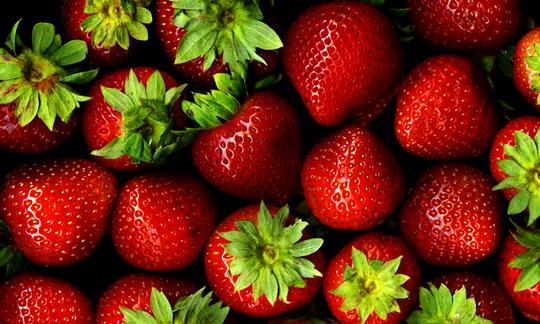

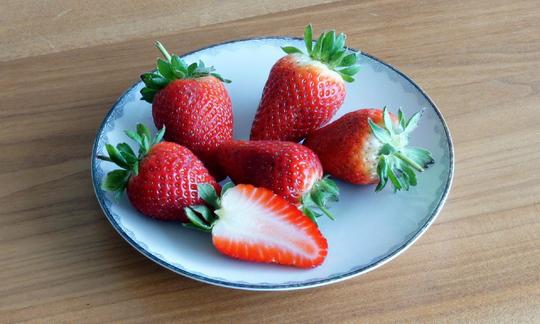

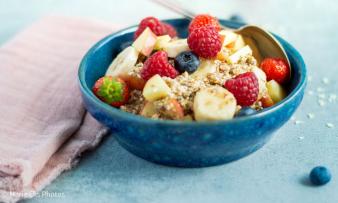
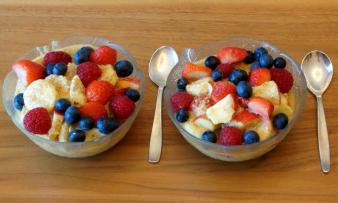
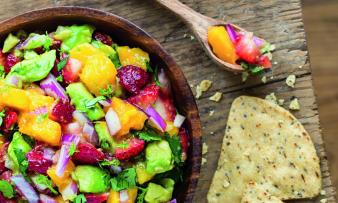





Comments